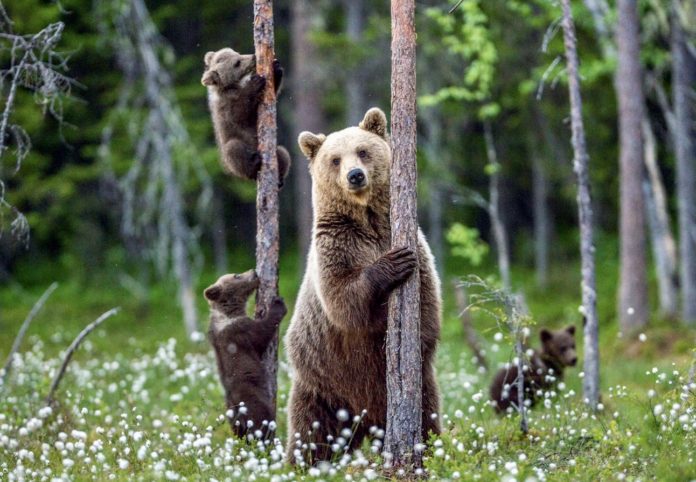
Lawsuit Filed Today Challenges U.S. Fish And Wildlife Service’s Authorization To Kill 72 Grizzly Bears Near Yellowstone
By Lauren Lewis
You can help all animals and our planet by choosing compassion on your plate and in your glass. #GoVeg
RELATED ARTICLES
Banning Cruelty: New Legislation Aims To Ban Octopus Farming In The U.S.
New bipartisan legislation has just been introduced in the U.S. to ban commercial octopus farming and prohibit imports of farmed octopus from foreign countries.
The...
Outrage In Yellowstone! Grizzly Bear Killed By Wildlife Officials & Left With Head & Paws Cut Off
Photo by: Trisha McFarland / Cowboy State Daily
A photo of a dead grizzly bear with its head and paws cut off has caused an...
Inside Florida’s Illegal Horse Meat Trade: Undercover Footage Shows Racehorse Being Shot & Butchered
A heart-wrenching discovery of illegal horse slaughter has emerged, with video footage exposing the tragic killing of a racehorse named 'Funny Biz,' who was...
Popular stories
News
Breaking! Iceland Makes A Move To Ban Barbaric Whale Hunting By 2024
Following three years of no whaling in Iceland, Svandís Svavarsdóttir, the country's Minister of Food, Agriculture, and Fisheries, is now contemplating the fact that there is little...
News
Breaking! Eleven People Sentenced To Life In Prison For The 2017 Murder Of World-Renowned South African Conservationist, Wayne Lotter
Eleven people were found guilty and sentenced to death in a Tanzanian court last Wednesday for the shocking murder of accomplished South African conservationist, Wayne Lotter.
Tanzania, however,...
News
California Assembly Approves Expansion Of The Ban On Toxic Rat Poisons To Increase Protections For Wildlife
The California Assembly passed legislation on a 57-12 vote that expands protection for children, pets, and wildlife from toxic rat poisons. Spearheaded by Assemblymember...


